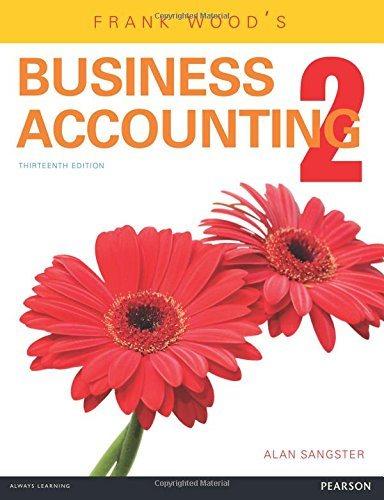Question
1) Zero Company's standard factory overhead rate is $3.75 per direct labor hour (DLH), calculated at 90% capacity = 900 standard DLHs. In December, the
1) Zero Company's standard factory overhead rate is $3.75 per direct labor hour (DLH), calculated at 90% capacity = 900 standard DLHs. In December, the company operated at 80% of capacity, or 800 standard DLHs. Budgeted factory overhead at 80% of capacity is $3,150, of which $1,350 is fixed overhead. For December, the actual factory overhead cost was $3,800 for 840 actual DLHs, of which $1,300 was for fixed factory overhead.
Assuming the use of a two-way breakdown (decomposition) of the total overhead variance, what is the factory overhead efficiency variance for Zero Company in December (to the nearest whole dollar)?
A) $150 unfavorable.
B) N/Athis variance does not exist under a two-way breakdown of the total overhead variance.
C) $90 unfavorable.
D) $225 favorable.
E) $425 unfavorable.
2) Gerhan Company's flexible budget for the units manufactured in May shows $15,640 of total factory overhead; this output level represents 70% of available capacity. During May, the company applied overhead to production at the rate of $3.00 per direct labor hour (DLH), based on a denominator volume level of 6,120 DLHs, which represents 90% of available capacity. The company used 5,000 DLHs and incurred $16,500 of total factory overhead cost during May, including $6,800 for fixed factory overhead.
What is the fixed factory overhead spending variance (to the nearest whole dollar) in December for Gerhan Company?
A) $300 favorable.
B) $180 unfavorable.
C) $0.
D) $680 unfavorable.
E) $480 unfavorable.
Step by Step Solution
There are 3 Steps involved in it
Step: 1

Get Instant Access to Expert-Tailored Solutions
See step-by-step solutions with expert insights and AI powered tools for academic success
Step: 2

Step: 3

Ace Your Homework with AI
Get the answers you need in no time with our AI-driven, step-by-step assistance
Get Started


